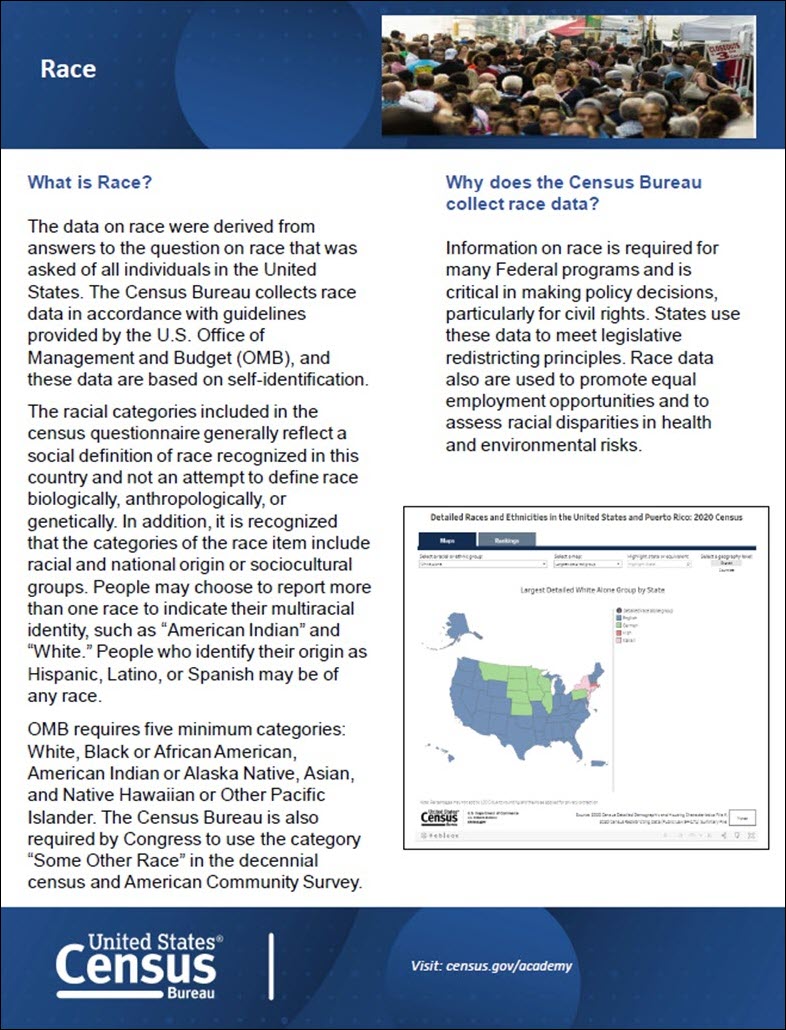Race
What is Race?
The data on race were derived from answers to the question on race that was asked of all individuals in the United States. The Census Bureau collects race data in accordance with guidelines provided by the U.S. Office of Management and Budget (OMB), and these data are based on self-identification.
The racial categories included in the census questionnaire generally reflect a social definition of race recognized in this country and not an attempt to define race biologically, anthropologically, or genetically. In addition, it is recognized that the categories of the race item include racial and national origin or sociocultural groups. People may choose to report more than one race to indicate their multiracial identity, such as “American Indian” and “White.” People who identify their origin as Hispanic, Latino, or Spanish may be of any race.
OMB requires five minimum categories: White, Black or African American, American Indian or Alaska Native, Asian, and Native Hawaiian or Other Pacific Islander. The Census Bureau is also required by Congress to use the category “Some Other Race” in the decennial census and American Community Survey.
Why does the Census Bureau collect race data?
Information on race is required for many Federal programs and is critical in making policy decisions, particularly for civil rights. States use these data to meet legislative redistricting principles. Race data also are used to promote equal employment opportunities and to assess racial disparities in health and environmental risks.
What are the five minimum race categories and how are they defined by OMB?
- White – A person having origins in any of the original peoples of Europe, the Middle East, or North Africa.
- Black or African American – A person having origins in any of the Black racial groups of Africa.
- American Indian or Alaska Native – A person having origins in any of the original peoples of North and South America (including Central America) and who maintains tribal affiliation or community attachment.
- Asian – A person having origins in any of the original peoples of the Far East, Southeast Asia, or the Indian subcontinent including, for example, Cambodia, China, India, Japan, Korea, Malaysia, Pakistan, the Philippine Islands, Thailand, and Vietnam.
- Native Hawaiian or Other Pacific Islander – A person having origins in any of the original peoples of Hawaii, Guam, Samoa, or other Pacific Islands.
Where can these data be found?
Our race statistics come from the decennial census, annual surveys such as the American Community Survey (ACS) and the Current Population Survey (CPS) and the Population Estimates Program (PEP).
To access this data, go to data.census.gov or for more information on the surveys available, go to Census Survey Explorer.
The Census Academy Learning Hub offers data gems, courses, and webinars to you to help you understand and use Census Bureau data.




